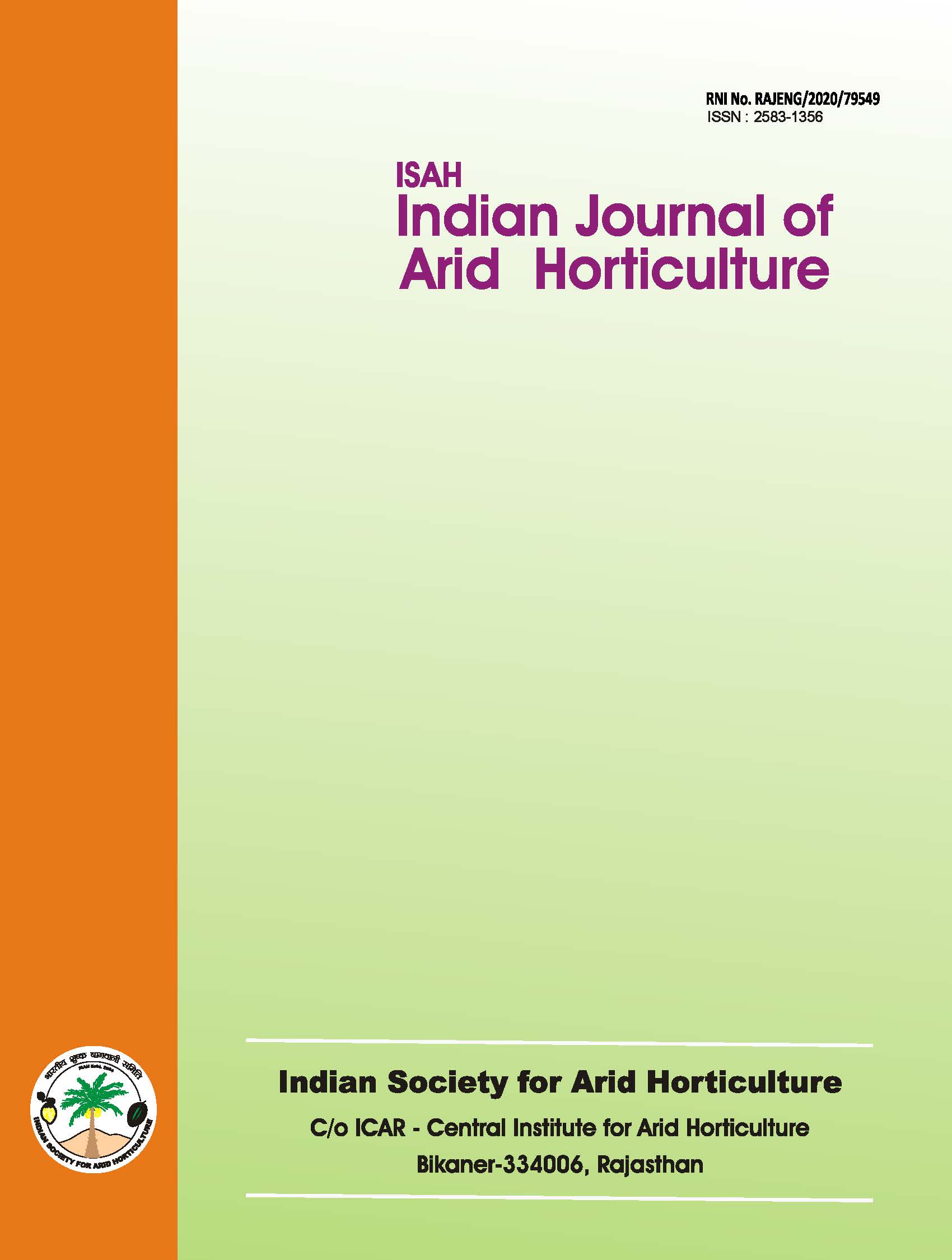Development of Non-Spiny Brinjal from Spiny Brinjal through Conventional Breeding
Keywords:
Brinjal, breeding, non-spiny, conventional breeding, Solanum melongenaAbstract
The spiny brinjal (Solanum melongena) var. VRM-1 is a familiar and promising variety in Vellore district and is commonly used for making Ennai Kathirikai, a side dish for biryani. However, the spines on the stalk pose a major challenge for picking and handling the fruits. A breeding initiative was undertaken at the Agricultural Research Station & Krishi Vigyan Kendra, Virinjipuram, to mask the spiny trait through a crossing program. The crosses aimed to develop a non-spiny brinjal while retaining desirable traits. Both parent plants used in the study were genetically pure for their respective spiny and non-spiny characteristics. A total of 18 crosses were made between spiny and non-spiny brinjal progenies. The true F1 generation was tagged in both cross combinations. In the F1 population of spiny × non-spiny crosses, 100% of the plants exhibited spiny traits. However, in the F1 population of non-spiny × spiny crosses, a reduced percentage of partially spiny plants was observed. This study confirms that the spiny trait is dominant. Further generational studies were conducted with continuous selfing. Results revealed that 100% non-spiny plants with high yield were obtained in the third and fifth cross derivatives during the fourth generation. Comparative trials were conducted during Kharif 2015 and Rabi 2015-16 with spiny brinjal VRM-1. The highest fruit yield per plant was recorded in the non-spiny × spiny third cross (1.43 kg/plant), followed by the non-spiny × spiny fifth cross (1.56 kg/plant). These genotypes could be utilized in further breeding programs to improve fruit yield and the non-spiny trait.Downloads
References
Bhaduri, P.N. (1951). Inter-relationship of non-tuberiferous species of Solanum with some consideration on the origin of brinjal. Indian Journal of Genetics, 2, 75-86.
Choudhury, B. (1976). Brinjal (Solanum melongena). In: Evolution of Crop Plants (Simmonds, N.W., Ed.), New York, pp. 278-279.
More, D.C., Patil, S.B., & Nimbalkar, V.S. (1982). Inheritance of some characters in brinjal cross SM 2 × Nimbalkar Green Round. Journal of Maharashtra Agricultural University, 7, 243.
Nimbalkar, V.S., & More, D.C. (1980). Genetic studies in brinjal (Solanum melongena L.). Journal of Maharashtra Agricultural University, 5, 208.

